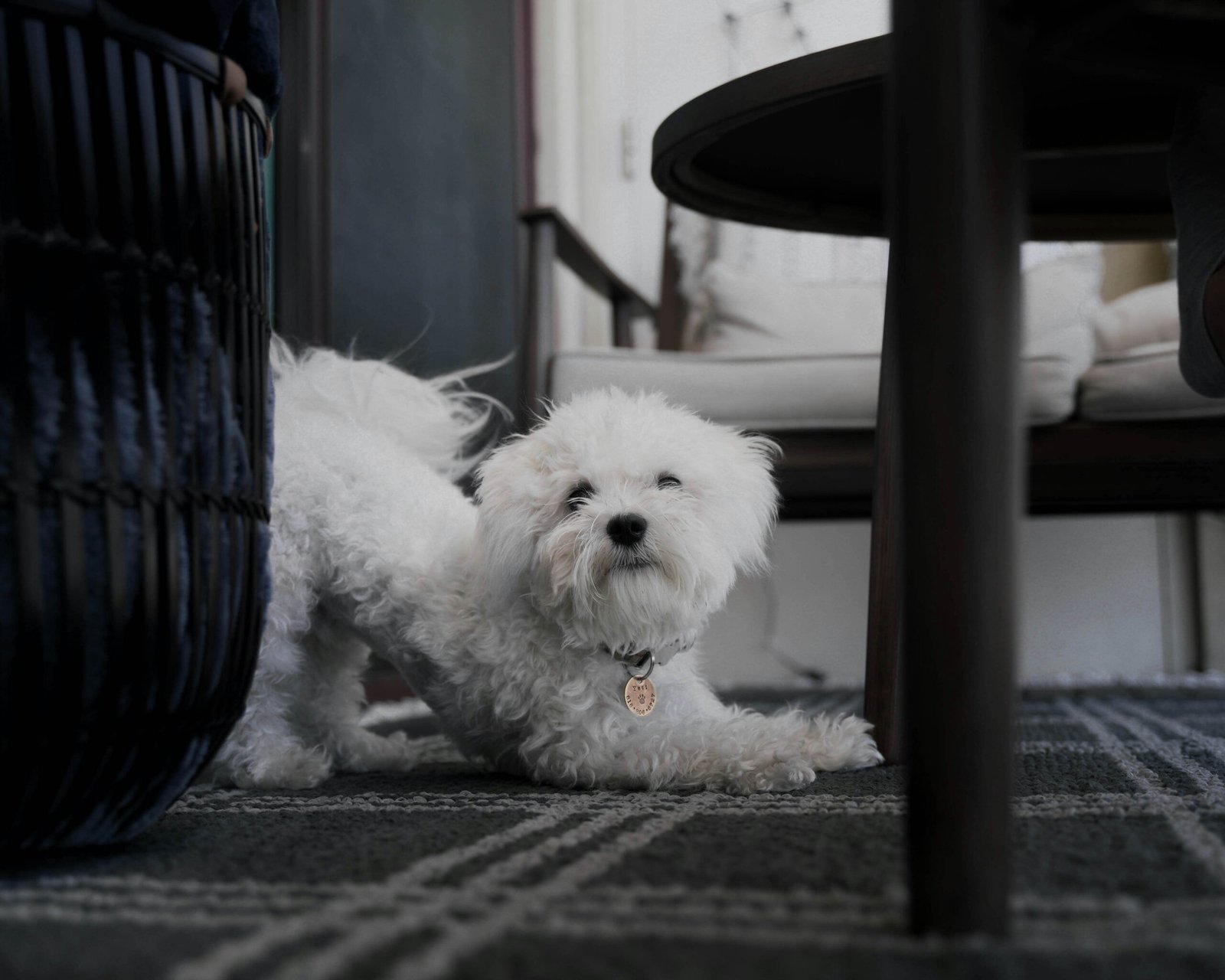Why Does My Dog Stretch So Much? Understanding the Behavior
Dogs are known for their playful and quirky behaviors, but one action that often catches our attention is stretching. Whether it’s the classic “downward dog” pose or a full-body stretch after waking up, dogs seem to love elongating their muscles. But why do they do this so frequently? Is it just a sign of comfort, or could it indicate something more significant about their health and well-being? In this blog post, we’ll explore the fascinating reasons behind your dog’s stretching habits, what it might mean for their physical and emotional state, and how you can support their overall health through simple observations.
The Many Reasons Dogs Stretch: A Closer Look
Stretching is a natural behavior for dogs, but it serves multiple purposes beyond just loosening up their muscles. Here’s a breakdown of why your furry friend might be stretching so often:
Waking Up Routine
Just like humans, dogs often stretch after a nap to get their blood flowing and wake up their muscles.Preparing for Physical Activity
Before engaging in play or exercise, dogs stretch to prepare their bodies for movement.Relieving Tension
Stretching can help release tension in their muscles, especially after long periods of rest.Expressing Comfort or Happiness
A good stretch can signal that your dog feels relaxed and content in their environment.Communicating Submission
Some stretches, like the “play bow,” are social signals to other dogs or humans indicating friendliness.
Understanding these reasons can give you insight into your dog’s daily habits and emotional state. By paying attention to when and how they stretch, you can better interpret their needs and ensure they’re happy and healthy.
Health Benefits of Stretching for Dogs
Stretching isn’t just a quirky habit—it actually provides numerous health benefits for your dog. Here’s how regular stretching can positively impact their well-being:
Improved Flexibility
Stretching helps maintain and improve your dog’s range of motion, which is essential for agility and mobility.Enhanced Circulation
Stretching promotes blood flow, delivering oxygen and nutrients to their muscles and tissues.Reduced Muscle Stiffness
Regular stretching can prevent stiffness, especially in older dogs or those with joint issues.Stress Relief
Stretching releases endorphins, which can help reduce stress and anxiety in dogs.Prevention of Injuries
By keeping their muscles loose and flexible, stretching minimizes the risk of strains or sprains during physical activity.
These benefits highlight the importance of encouraging your dog to engage in natural stretching behaviors. It’s a simple yet effective way to support their long-term health.
Check this guide 👉Why Do Dogs Stretch? Best 7 Behavior Tips!
Check this guide 👉Why Does My Dog Roll on His Back? Best 7 Behavior Tips!
Check this guide 👉Stop Your Dog from Digging: Best 7 Expert Tips!

Reasons for Stretching | Health Benefits |
|---|---|
Waking up routine | Improved flexibility |
Preparing for physical activity | Enhanced circulation |
Relieving muscle tension | Reduced muscle stiffness |
Expressing comfort or happiness | Stress relief |
Communicating submission | Prevention of injuries |
How to Encourage Healthy Stretching Habits in Your Dog
While dogs naturally stretch on their own, there are ways you can encourage this behavior to ensure they’re getting the most out of it. Here are some tips to promote healthy stretching habits:
Provide Ample Playtime
Engage your dog in activities that encourage movement, such as fetch or agility training.Create a Comfortable Environment
Ensure your dog has a cozy resting area where they feel safe and relaxed.Incorporate Gentle Exercises
Introduce light exercises like short walks or supervised play sessions to keep their muscles active.Observe Their Body Language
Pay attention to how and when your dog stretches to identify any patterns or changes in behavior.Consult a Veterinarian if Needed
If your dog suddenly starts stretching excessively or seems uncomfortable, seek professional advice.
By taking these steps, you can help your dog maintain a balanced lifestyle while supporting their natural stretching instincts.
Common Misconceptions About Dog Stretching
There are several myths surrounding why dogs stretch and what it means for their health. Let’s debunk some of the most common misconceptions:
Myth: Excessive Stretching Always Indicates Pain
While stretching can sometimes signal discomfort, it’s not always a cause for concern.Myth: Dogs Only Stretch When They’re Tired
Stretching occurs for various reasons, including excitement or preparation for activity.Myth: Older Dogs Don’t Need to Stretch
Senior dogs benefit greatly from gentle stretching to maintain mobility and flexibility.Myth: Stretching Has No Health Benefits
As discussed earlier, stretching plays a crucial role in your dog’s physical and mental health.Myth: All Stretches Mean the Same Thing
Different stretches serve different purposes, from relieving tension to communicating with others.
Understanding these facts can help you better interpret your dog’s behavior and provide appropriate care.
Physical Signs to Look for During Dog Stretching
Not all stretches are the same, and paying attention to your dog’s body language can provide valuable insights into their well-being. Here are some physical signs to observe during their stretching routine:
Arch of the Back
A pronounced arch in the back during a stretch could indicate they’re working out stiffness or tension.Front Paws Extended Forward
This position often signals readiness for play or excitement about an upcoming activity.Hind Legs Stretched Backward
Stretching the hind legs backward is typically a sign of muscle relaxation after rest.Side-to-Side Movement
If your dog shifts their weight side to side while stretching, it may suggest they’re testing their balance or flexibility.Exaggerated Movements
Overly dramatic stretches might be a way for your dog to communicate with you or other animals nearby.
By observing these subtle cues, you can better understand what your dog is trying to express through their stretches. These behaviors are not only functional but also deeply tied to their emotional state.
When to Be Concerned About Your Dog’s Stretching
While stretching is usually harmless, there are certain situations where it might signal an underlying issue. Keep an eye out for these warning signs that may warrant further investigation:
Frequent Stretching Accompanied by Whining
Vocalizations during stretching could indicate discomfort or pain in their muscles or joints.Avoidance of Certain Movements
If your dog avoids stretching one side of their body, it might point to localized pain or injury.Limping After Stretching
Limping immediately after a stretch could be a sign of joint problems or arthritis.Unusual Postures
Strange or unnatural positions during stretching might suggest difficulty in finding comfort.Increased Frequency of Stretching
A sudden uptick in stretching behavior could indicate stress, anxiety, or an attempt to relieve persistent discomfort.
If you notice any of these signs, it’s best to consult a veterinarian to rule out potential health concerns. Early intervention can make a significant difference in your dog’s quality of life.
Fun Facts About Dog Stretching You Might Not Know
Stretching isn’t just a practical behavior—it’s also full of interesting quirks that make dogs even more fascinating. Here are some fun facts about why and how dogs stretch:
The “Play Bow” Stretch
This iconic stretch, where the front legs are extended and the rear end is up, is a universal invitation to play among dogs.Stretching as a Greeting
Dogs often stretch when they see their owners as a way of saying hello and showing affection.Stretching After Eating
Some dogs stretch immediately after meals, possibly to aid digestion or simply because they feel content.Breed-Specific Stretching Styles
Certain breeds, like Greyhounds or Dachshunds, may have unique stretching patterns due to their body structure.Stretching Enhances Social Bonds
In multi-dog households, synchronized stretching can strengthen social connections between pets.
These fun facts highlight how stretching is deeply ingrained in a dog’s daily life, serving both practical and social purposes. It’s yet another reminder of how incredible our canine companions truly are!
Frequently Asked Questions About Dog Stretching
Why does my dog stretch so much after sleeping?
Stretching after sleep helps improve blood circulation and prepares their body for movement.
Is excessive stretching a sign of illness?
Not necessarily, but if accompanied by other symptoms like lethargy or limping, consult a vet.
Can I teach my dog specific stretches?
Yes, with patience and positive reinforcement, you can guide them through gentle stretches.
Do all dog breeds stretch equally?
While all dogs stretch, some breeds may do so more frequently due to their energy levels or body structure.
Should I be concerned if my dog doesn’t stretch much?
Not necessarily, as long as they appear comfortable and active. However, monitor for any changes in behavior.
Final Thoughts: Celebrating Your Dog’s Natural Behaviors
Stretching is just one of the many fascinating behaviors that make dogs such wonderful companions. By understanding the reasons behind their stretches and recognizing the benefits, you can deepen your bond with your furry friend and ensure they lead a happy, healthy life. Remember, every stretch tells a story—whether it’s a sign of relaxation, preparation, or communication. Embrace these moments and cherish the unique quirks that make your dog who they are. After all, their stretches are a small yet meaningful part of what makes them so lovable.
Cuterebra Larvae in Cats: Best 7 Expert Tips! – Expert advice on signs, treatment & prevention of this rare but serious feline parasitic infestation.
Cuterebra Larvae in Dogs: Best 7 Expert Tips! – Expert advice on signs, treatment & prevention of this rare but serious parasitic infestation.
Cat Tumor on Paw: Best 7 Expert Tips! – Expert advice on signs, diagnosis, treatment & care for feline paw tumors.
Panacur Side Effects in Dogs: Best 7 Expert Tips! – Safe usage, common reactions & when to call the vet.





